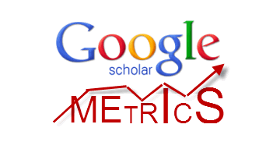Bibliometric study of the megazine Gaceta Médica Estudiantil
Keywords:
Bibliometric study, Scientific investigation, Student Medical GazetteAbstract
Introduction: scientific research constitutes one of the fundamental pillars in the advancement of Medicine, in such a way that from the Undergraduate level it is necessary to implement research chairs and different favorable mechanisms towards the collective construction of knowledge. Bibliometrics statistically and quantitatively analyzes publications within a specific research field. Objective: to characterize the scientific production of the Gaceta Médica Estudiantil magazine between the year 2020 and the first issue of 2023. Method: a bibliometric study was carried out. The universe was made up of 76 published scientific articles. The sampling technique was not used. The variables analyzed were: year of publication, type and topic of the article, career in medical sciences, origin of the author, number of authors, readings, downloads, and bibliographic references. Descriptive statistics, power of attraction, degree of collaboration and the Price index were applied. Results: the year 2020 presented the highest number of articles published 31 (40.78%) and the highest collaboration rate. The original articles predominated 38 (50%). Articles with 5 authors stood out. The Medicine career predominated with 56 articles (73, 68%). The Guantanamo University of Medical Sciences stood out with the largest number of authors (105 authors, 51.22%). 233 keywords, 57 structured abstracts and 1078 bibliographical references were used. Conclusions: the importance of the bibliometric study lies in identifying the strengths and weaknesses of the Gaceta Médica Estudiantil journal, always with a constructive approach to increase its visibility and meet international quality parameters.Downloads
References
1- Velásquez JD. Importancia de la publicación científica en el pregrado de medicina. Rev Hisp Cienc Salud [Internet]. 11 de septiembre de 2016 [citado 11 de febrero de 2023];2(2):184-5. Disponible en: https://uhsalud.com/index.php/revhispano/article/view/160.
2- Hernández García Frank, Robaina Castillo José Ignacio. Publicación científica estudiantil en ciencias médicas en Cuba: ¿oportunidad o reto?. EDUMECENTRO [Internet]. 2018 Jun [citado 2023 Feb 11] ; 10( 2 ): 234-238. Disponible en: http://scielo.sld.cu/scielo.php?script=sci_arttext&pid=S2077-28742018000200020&lng=es.
3- Castillo Esparcia A. Investigación e Investigadores. Las revistas científicas como instrumento de comunicación. Vivat Academia. Rev Com [en línea] 2012 [citado 11 febr 23] 11 (7) E:1002-1017.Disponible en:https://doi.org/10.15178/va.2011.117E.1002-1017.
4- Felquer LV. Las revistas científicas: su importancia como instrumento de comunicación de la ciencia. 2002 [EnInternet] [Consultado 11 febr 23] Recuperado de https: //goo.Gl/MhSL9X. Disponible en: https://doi.org/researgachet.net. [Citado 11 febr 23]
5- Benítez-Rojas Ld. Publicar en el pregrado y revistas científicas estudiantiles, la solución integral de un problema. SPIMED [Internet]. 2020 [citado 11 Feb 2023];1(1). Disponible en: https://revspimed.sld.cu/index.php/spimed/article/view/2
6- Universidad de Ciencias Médicas de Guantánamo. Editorial Ciencias Médicas. Gaceta Médica Estudiantil (GME) [en línea] 2022 [Citado 11 febr 23] 3. (2) Disponible en: http://www.revgacetaestudiantil.sld.cu/index.php/gme.
7- Maradiaga E, Cecilia García M. Análisis bibliométrico de la Revista Médica Hondureña, 1990-2020. Rev Méd Hondur [Internet]. 2021; 89 (1):45-51. Disponible en: http://www.bvs.hn/RMH/pdf/2021/pdf/Vol89-1-2021-8.pdf.
8- Chibas-Muñoz EE. Revista Información Científica y Gaceta Médica Estudiantil desarrollando la gestión editorial desde el pregrado al posgrado. Rev Inf Cient. 2023; 102:4111. DOI: https://doi.org/10.5281/zenodo.7548539.
9- Universidad de Ciencias Médicas de Guantánamo. Editorial Ciencias Médicas. Gaceta Médica Estudiantil (GME) [en línea] 2022 [Citado 11 febr 23] 2 (1) Disponible en: http://www.revgacetaestudiantil.sld.cu/index.php/gme/about/submissions.
10- Ahora [ en internet]. Holguín, Cuba. Prichs Rodríguez L. [ Actualizado 8 de mzo del 2021] [ Consultado 10 febr 2023] Disponible en:http://www.ahora.cu/es/holguin/11568-con-impacto-positivo-revista-cientifica-de-estudiantes-de-holguin.
11- Lazo Herrera LA, González-Velázquez VE. Revistas científicas estudiantiles en Cuba: nuevos espacios para la publicación en ciencias de la salud. Educ Med. 2020. Disponible en: https: //doi.org/10.1016/j.edumed.2020.04.003
12- Calvo Saborit DD. ¿Es necesario crear nuevas revistas científicas estudiantiles de Ciencias Médicas en Cuba? 16 de Abril. 2014;53:4---6, http://www.rev16deabril.sld.cu/index.php/ 16 04/article/view/30.
13- Díaz Rodríguez, YL; Rodríguez Venegas, EC; Vitón Castillo, AA; Hernández García, OL; Díaz Chieng, LY. Análisis de artículos sobre COVID-19 publicados en revistas médicas pertenecientes a universidades médicas cubanas. Rev Inf Cient [Internet]. 2020 [citado 9 Feb 2023]; 99, 5: 412-424. Disponible en: https://www.redalyc.org/journal/5517/551764957002/html/
14- Rodríguez Álvarez, MX. La investigación científica durante la carrera de medicina: ¿realmente cubre nuestras expectativas? Rev Cient Cienc Med [Internet]. 2014 [citado el 8 de febrero de 2023]; 17(1): 5-5. Disponible en: http://www.scielo.org.bo/scielo.php?script=sci_arttext&pid=S1817-74332014000100002&lng=es.
15- Romero Navarro L, Pérez García E, Pardo Fernández A, Silot Ramírez B, Fernández Pereira B. El componente investigativo de la carrera de Medicina, un reto para la calidad del egresado guantanamero. Rev Inf Cient [Internet]. 2016 [citado 11 Feb 2023];95(4). Disponible en: https://revinfcientifica.sld.cu/index.php/ric/article/view/92.
16- Ávila-Toscano, José Hernando, Marenco-Escuderos, Ailed, Madariaga OrozcoCamilo Indicadores bibliométricos, redes de coautorías y colaboración institucional en revistas colombianas de psicología. Avances en Psicología Latinoamericana [en linea]. 2014, 32(1), 167-182[fecha de Consulta 11 de Febrero de 2023]. ISSN: 1794-4724. Disponible en: https://www.redalyc.org/articulo.oa?id=79929780013
17- Sancho, Rosa et al. Indicadores de colaboración científica inter-centros en los países de América Latina. INCI [online]. 2006, [citado 12 febr 23], 31(4):(284-292). Disponible en: <http://ve.scielo.org/scielo.php?script=sci_arttext&pid=S0378-18442006000400008&lng=es&nrm=iso>.
18- Mayor GE, Sagaro CNM. Producción científica sobre ciencias biomédicas en la provincia de Santiago de Cuba. Revista Cubana de Información en Ciencias de la Salud (ACIMED). 2021;32(2):1-27.
19- Santalla Corrales, A. Análisis bibliométrico de los artículos de autoría extranjera publicados en tres revistas científicas estudiantiles cubanas. Univ Med Pinareña [internet], 2021. [Citado 13 de Feb de 2023]; 17(3): 1-9. Disponible en: https://www.redalyc.org/journal/6382/638270030011/html/
20- Martin, Sandra Gisela y Lafuente, Valentina. Referencias bibliográficas: indicadores para su evaluación en trabajos científicos. Investig. bibl [online]. 2017, [citado 2023-02-14] 31(71):151-180.Disponible en: <http://www.scielo.org.mx/scielo.php?script=sci_arttext&pid=S0187-358X2017000100151&lng=es&nrm=iso>.

Downloads
Published
How to Cite
Issue
Section
License
Authors who have publications with this journal agree to the following terms: authors retain their copyright and grant the journal the right of first publication of their work, which is simultaneously subject to the Creative Commons Attribution-NonCommercial 4.0 International License that allows third parties to share the work as long as the author and first publication in this journal are indicated, for non-commercial use. Authors may adopt other non-exclusive license agreements for distribution of the published version of the work (e.g., depositing it in an institutional telematic archive or publishing it in a monographic volume) as long as the initial publication in this journal is indicated. Authors are allowed and encouraged to disseminate their work via the Internet (e.g., in institutional telematic archives, in their web page or in Pre-print servers) before and during the submission process, which can lead to interesting exchanges and increase citations of the published work. (See The Open Access Effect).






